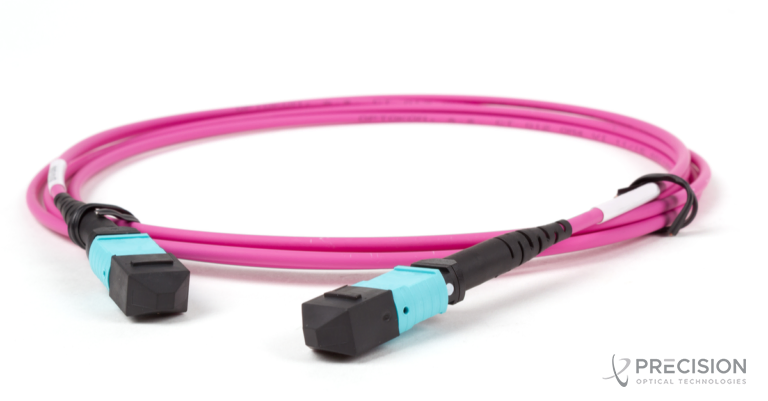
An Engineer’s Guide to Connectors

Networking at speeds of 400G and beyond is a hot topic in the fiber optic industry right now. Various devices developed to achieve high-speed milestones are regularly being rolled out, so it is hardly surprising that a fair amount of confusion exists regarding their different capabilities and uses. This overview is designed to help network professionals begin to cut through the uncertainty.
While there are several components to consider, this article will cover some of the most important connector types. Subsequent articles will take a closer look at cabling, transceivers and strategies for limiting connectivity loss.
Basic Connector Types: ST, SC, LC, FC
As many as 100 different types of fiber optic connectors have appeared on the market over the years, although only a small handful comprise the majority of those in use. A landscape once dominated by straight tip (ST) connectors with their characteristic bayonet mount gave way to the more cost-effective square standard connector (SC), with its push-pull coupling; in turn, SCs have experienced gradual replacement by small form factor lucent connectors (LCs) that take up only half the footprint. Though still found in various applications, STs are typically swapped out during retrofits. Fiber optic connectors (FCs), which utilize steel and screw-type sleeves in place of plastic locking and latching mechanisms, have also seen reduced use in the effort to keep costs low; these remain the connectors of choice, however, for high-vibration and precision measurement environments.
Micro LC Connector
Because of its reduced size, the LC is ideally suited for deployment in densely populated racks and panels. Additionally, the trend toward space-saving devices has produced newer connectors, including the Micro LC. This is a bayonet-style connector that can mate with a standard LC, providing a solution to applications such as behind-the-wall deployment, plug-and-play modules and on-board optics. Stackable adapters also have been developed for the Micro LC, which eliminate the need for finger access to the latch mechanisms and allow for significantly increased mounting density.
MPO Connectors
Each of the connector types described above supports a single fiber in simplex (unidirectional) form, or two fibers in duplex (bidirectional) configuration. At a size similar to an LC duplex, there are also multi-fiber push on (MPO) connectors designed to support cables with multiple fibers. These find extensive use in high-density patch environments such as data centers, and they have become a standard interface for bandwidth speeds beyond 10G. While other types are available, MPOs typically support eight, 12 or 24 fibers. They must be mated to an opposing male (protruding) or female (receiving) connector, which adds to deployment complexity and cost; however, they are relatively inexpensive when considered within a “per-fiber” context.
An important caveat to consider is that most multi-fiber connectors are not designed for field-fit applications, so they must instead be lab-terminated; once terminated, moreover, the sequence of the fibers cannot be changed. To compensate, MPOs are often supplied with a fan-out assembly of simplex or duplex connectors at the opposing end. This allows operators to change channels by re-patching, but also means that only one side of the connector gains an advantage from its small form, high-density design.
CS Connector
This limitation of MPOs can be addressed by the newly-developed CS connector, a push-pull device small enough to be mountedin pairs within the footprint of a single transceiver module. For example, consider a data stream moving from a 200G module through an MPO-terminated cable, broken out into two LC duplex connectors to connect to two 100G modules on the other end. This same breakout can be achieved with two CS-terminated cables connected at both ends, with no fan out required.
Conclusion
As the need for faster networking speeds continues to grow, selection of the most appropriate components to build both resilience and flexibility into systems becomes ever more crucial. As always, the experts at Precision Optical can answer questions and provide insight on building lasting network solutions.
To view our Cable Builder Configurator, click the link below!






